Thermosocks: features, types and selection criteria

Thermosocks are a unique piece of clothing and an indispensable part of a modern person's wardrobe. They protect the feet from hypothermia in winter and prevent them from overheating in the off-season. The material in this article will tell you about what thermosocks are, how they differ from ordinary ones, what advantages and disadvantages they have. In addition, you will learn how to choose, wear and wash them correctly.
What is it and how is it different from the usual?
At first glance, thermal socks may not look different from regular socks. Sometimes they even look like simple classical counterparts. The prefix "thermo" means that the socks are designed not so much to warm your feet as to keep them dry. They are considered thermal underwear, are responsible for the thermoregulation of the feet in shoes and the removal of excess moisture from the feet.






Thanks to the special technology of weaving the fibers and threads of thermolite, which are part of the material, an air cushion is created between the skin of the legs and the textiles. Their main difference from the classics is that, regardless of the intensity of the loads, the thermal socks always remain dry. At the same time, due to the elastane fibers, they sit quite tightly on the legs, but do not rub the skin.
Such items of clothing have unique properties. They are summer and winter, differ in purpose and have their own classification. Thermosocks can be for women, men, teenagers and children. They are always warm and dry, even in slush and cold.
They are made by zonal and continuous knitting.Continuous knit socks have the same thickness throughout the garment. The zonal knit counterparts stand out for tighter weaving in the toes, heel and sides. This feature provides additional cushioning at the points of highest pressure on the foot.


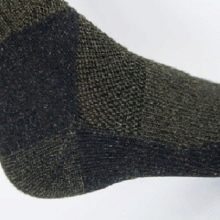
Advantages and disadvantages
Treomnocks have many advantages. They are distinguished by:
- functionality and practicality;
- durability and efficiency;
- wide size range;
- variety of shades and colors;
- maintaining a comfortable temperature of the legs;
- variability of purpose and design;
- the presence of thermoregulation zones;
- resistance to odor absorption;
- wear resistance and resistance to washing;
- aesthetic appeal;
- price variability and availability for buyers.



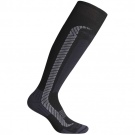


Thermosocks have the ability to adjust the balance between body temperature and the external environment. This not only prevents overheating, but also prevents leg fatigue.
Along with the advantages, thermal socks also have disadvantages. According to buyers, not all products are as effective as they would like. Some people don't like the fact that socks are not too heat-saving and cannot warm their feet in cold weather. However, buyers do not always take into account that the models differ in purpose, and this factor determines their thermal properties. For example, thermal socks for sports and walking differ in the material of manufacture and the level of moisture-absorbing function.
Someone is sure that thin thermal socks must be necessarily warm. This is a misconception, since each species has its own characteristics and operational properties. And it's not so much a matter of price as of ignorance of the nuances of each variety.

Varieties
To date, the range of thermal socks has many lines designed for different seasons and a different kind of sport (for example, for figure skating, snowboarding, alpine skiing). They are summer, winter, thin, dense, warm. The range of manufacturers includes male and female versions of the classic type and waterproof heated models. At the same time, based on the purpose, the products can be elongated, ordinary and shortened.



Compression
The products of this line are designed primarily for the prevention of venous diseases (phlebitis and thrombosis). In addition, they are suitable for all those with sore legs. Compression-type thermal socks are designed to increase blood flow to the muscles, saturate them with oxygen, and speed up recovery after long workouts.

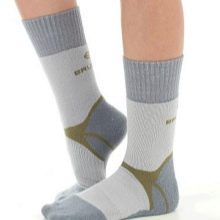
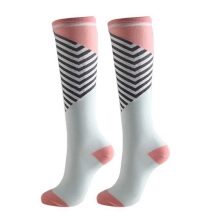
Multisport
This category includes products for cross-trekking and running, as well as modifications of the classic type for the gym. Athletic thermal socks are characterized by the presence of a moisture absorption function.
At the same time, individual modifications of the multisport linear range are equipped with a minimum insulation layer and inserts for shock absorption.



Cross-country
The running line products are of two types: uniform over the entire surface and with different thicknesses. The second modifications are equipped with reinforcements in the instep and heel zones.
This allows you to reduce the load on the foot, which is important for athletes who are engaged in running and similar exercises.



For walking
These thermal strips are thin and designed for those who are engaged in fitness walking. In comparison with classical counterparts, they have additional moisture-absorbing inserts.
Feet in these socks remain dry regardless of the intensity of the workout.



Everyday
Unlike sports counterparts, options for everyday wear are not made of 100% synthetics, but of combined type threads. They are characterized by low weight, medium thickness, they are made from synthetic fibers with the addition of merino wool. Casual socks have good heat-saving functions, but have less moisture absorption.


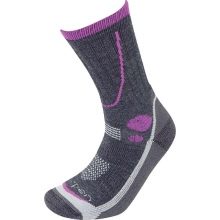
For hiking
Hiking options are reinforced in the heel, instep and toe areas. Designed with the use of high-tech material, due to which they fit snugly on the leg and are characterized by tear resistance. In comparison with other modifications, the options for hiking are worn much longer.
Such socks do not chafe the skin, and calluses do not appear even during intense and prolonged sports activities.



Ski
Ski and snowboard models have inserts in the shins and soles. They are designed to protect the feet and lower legs from rigid contact points. In addition, they have optimal moisture and wind protection properties. Among other functions of such wardrobe items it is worth noting the retention of heat.


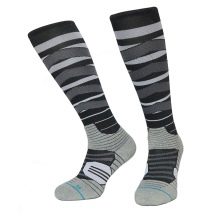
Cycling
Thermosocks in this linear range are designed for long-term physical activity. They are distinguished by the convenience and comfort of wearing, optimal fit and the absence of friction between skin and fabric. These are quick-drying models made of synthetic material with high moisture-wicking functions. They stretch in the ankle area, thereby ensuring blood flow to the feet.



For hunting and fishing
The structure of these products is much more complex than that of the classic thermal socks. Their length can be standard or extended, they are made with thickening along the entire length. The line includes options equipped with additional thermal insulation and heating systems.
These are thick socks, the task of which is to heat the feet; they are made of a material with the so-called dry heat.



Manufacturing materials
The entire range of raw materials for thermal socks can be divided into 3 types: synthetic, natural and combined. Most often, products are made from polyester, lycra, nylon, as well as combinations thereof... Rarely they are made from natural materials (angora, camel, dog hair, and also merino wool). However, woolen models, although they have high heat-shielding properties, are expensive, and they dry more slowly than their synthetic counterparts.
Good thermal socks, combining the best properties of moisture and heat protection, consist of synthetics with the addition of natural fibers (for example, merino wool). These products are designed for winter sports.


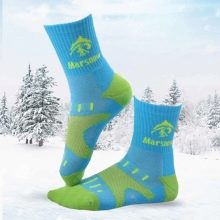
They use Thermolite and Primaloft insulation, which are raw materials for the production of sleeping bags and outerwear. On the inside, these fibers are hollow and thin. Thanks to them, the socks are suitable for active sports in cold weather (for example, ski tourism or mountaineering) and save your feet from the cold.
For those who are engaged in active sports in the warm season, trekking waterproof thermal socks are developed using Coolmax or Polipropilen fibers. These artificial threads have no heating properties. but they do not absorb moisture at all, so a person's feet always remain dry, regardless of weather conditions.


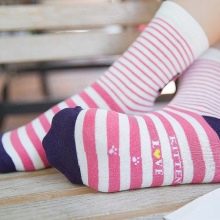
Manufacturers rating
Many leading companies with a worldwide reputation are engaged in the production of thermal socks. A lot of high-quality and practical products are produced by trademarks of China, Czech Republic, Germany. Finnish and Mongolian brands have noteworthy options for a wide range of thermal products for sports and everyday wear. At the same time, large firms are engaged in the manufacture of models for various shoes, including membrane ones.
The top of the best includes several manufacturers of thermal underwear, whose products are in great consumer demand and have a lot of positive reviews on the vastness of the World Wide Web.
- Lasting Is a Czech manufacturer of high quality thermal socks with excellent performance characteristics. Differs in the release of practical and durable models for men and women.



- Norfin is a leader in the design and manufacture of modern, lightweight and comfortable underwear. The brand's socks are great for everyday wear, they are equipped with a soft elastic band that does not chafe the skin.



- Haski offers to the attention of buyers thermal socks for hunting and fishing at any time of the year. The manufacturer's products are of high quality, excellent heat-saving properties and quick removal of moisture from the skin surface.


- Tesema (Finland) manufactures thermal socks with inner fleece insulation. The range is characterized by pleasant tactile sensations and an optimal level of convenience. The disadvantage of products is their thickness.


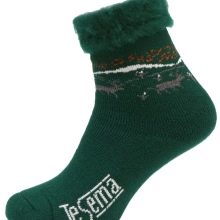
- Thermosocks from the Smartwool brand are intended for lovers of long hiking trips. They are thickened in the heel and foot, which reduces shock and makes walking easier. The models are suitable for winter sports fans.

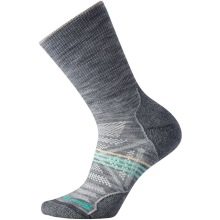

- J. B. Extreme produces thermal socks, which are not cold even in the harsh winter. Products of the brand are distinguished by the convenience of fixing on the leg, these socks do not slip off their feet, even if a person walks in high boots for a long time through the snowdrifts.

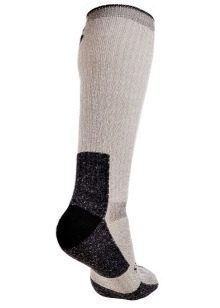

Selection Tips
There are a number of factors that need to be taken into account when choosing a thermosoice model. It is important to understand that the products are not at all universal: you cannot wear the same pair in summer, in the off-season and in winter, counting on the fact that it will simultaneously warm up and remove excess moisture.
Products for rubber boots, skates, trainers and trekking shoes vary, as do the options for summer and extreme cold temperatures.
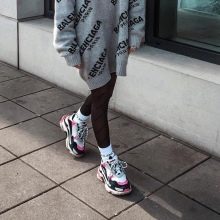


To choose the right option for winter, you need to study the composition of the products:
- for the cold season it is worth taking options with wool, nylon and elastane;
- for active sports, including jogging, products with a high content of polyester or other synthetics and wool are suitable;
- for daily wear in cold weather or winter fishing need wool socks with a low synthetic content;
- for summer everyday wear you should choose high-quality socks with cotton or silk;
- not worth buying 100% cotton socksthey do not wick away moisture and absorb odors;
- the best socks are made without seams and have reinforcements in the areas of greatest load;
- models of medium thickness are suitable for spring and autumn, which are made of two layers, three-layer ones are needed for winter.


To make the right choice and choose the best functional models, you need to pay attention to the height of the thermososks. According to the recommendations of the manufacturers, you cannot take products over their size. The parameters of the size range of each brand are indicated taking into account the shrinkage of the material of manufacture after the first wash.
Too large socks will hang on your feet, which will reduce thermoregulation.

How to wear and wash properly?
Contrary to popular belief, regular and even snowboard thermal socks should be worn on bare feet. When they are put on tights or other socks, thermoregulation is disturbed, which means that the properties of the products are reduced. Socks need to be washed by hand or in the gentle mode of the washing machine without a strong spin. In this case, do not use bleach or stain remover.
The water temperature can be cool or warm. Do not use aggressive detergents. You can not dry the thermal socks on the battery and iron... This leads to a violation of the structure, deformation of the fibers and the loss of their properties. It is desirable that the drying of the products is natural.

How to choose thermal underwear, see below.








